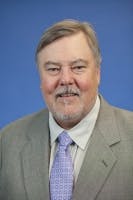LED-based lighting begins to realize unlimited potential (MAGAZINE)
As I write this, I'm attending the US Department of Energy (DOE) solid-state lighting (SSL) workshop in Detroit. The presentations thus far have covered ground ranging from tunable human-centric lighting (HCL) to Detroit's laudable street-light project - partially funded by the DOE. The city has installed 25,000 SSL luminaires, mostly this year. Still, the prevailing theme of the opening morning was rethinking the form and function of lighting.
We recently covered HCL and whether science supports the use of light as a therapy or to boost productivity. The speakers at the workshop clearly believe the industry should move forward now, including Steven Lockley, associate professor of medicine at Harvard Medical School. The science may not be perfect, but the speakers believe there is credible evidence that light therapy works. For example, Lockley said light therapy at home could delay the need for the elderly to move into care facilities.
However, some of the most compelling comments came as panelists were asked how lighting developers should act based on what the industry knows. Lockley advocated more tunable lighting in schools and medical facilities but also made a surprising comment. He said no one was thinking about tunable technology in street lights, but that a late-night transition to a warmer CCT would be better overall for the environment and people.
Most people think about SSL with an eye toward energy savings, and dimming in street lights has been discussed and implemented in some cases. Still, even 4000K-CCT street lights can impact sleep patterns - and Lockley thinks of SSL in terms of health and wellbeing first, and hopes such goals can be attained with lower-power LED-based products.
Of course, most of the comments about new approaches to lighting had more to do with form factor than HCL. Host Jim Brodrick, SSL program director at the DOE, lamented the downlights in the meeting room. He said the shape and depth was purely due to the shape of lamps, and a flat circular disk that required no penetration into the ceiling might be a better design.
We are seeing significant evolution in form factor and functionality in SSL products. Peruse the article on the DOE's Next Generation Luminaires program in this issue for inspiration. There are energy-efficient products aplenty, but some have unique forms and features.
Consider the product on our cover. That Swirl design is more about style than functionality, but it could not be implemented using legacy sources.
However, one speaker issued some words of caution. Leslie North, principal at Aurora Lighting Design, lamented that no tunable products are compatible in terms of CCTs or the dimming curve. She also said SSL color performance needs to be synchronized with other legacy sources such as fluorescent because designers often need to mix technologies.
As we covered in a recent roundtable, the SSL industry has work to do in dimming performance, especially when it comes to changes in CCT and spectral distribution. But the industry has come a long way in light quality and color rendering. Let's keep the momentum going.
Maury Wright,
Editor
[email protected]

Maury Wright | Editor in Chief
Maury Wright is an electronics engineer turned technology journalist, who has focused specifically on the LED & Lighting industry for the past decade. Wright first wrote for LEDs Magazine as a contractor in 2010, and took over as Editor-in-Chief in 2012. He has broad experience in technology areas ranging from microprocessors to digital media to wireless networks that he gained over 30 years in the trade press. Wright has experience running global editorial operations, such as during his tenure as worldwide editorial director of EDN Magazine, and has been instrumental in launching publication websites going back to the earliest days of the Internet. Wright has won numerous industry awards, including multiple ASBPE national awards for B2B journalism excellence, and has received finalist recognition for LEDs Magazine in the FOLIO Eddie Awards. He received a BS in electrical engineering from Auburn University.





